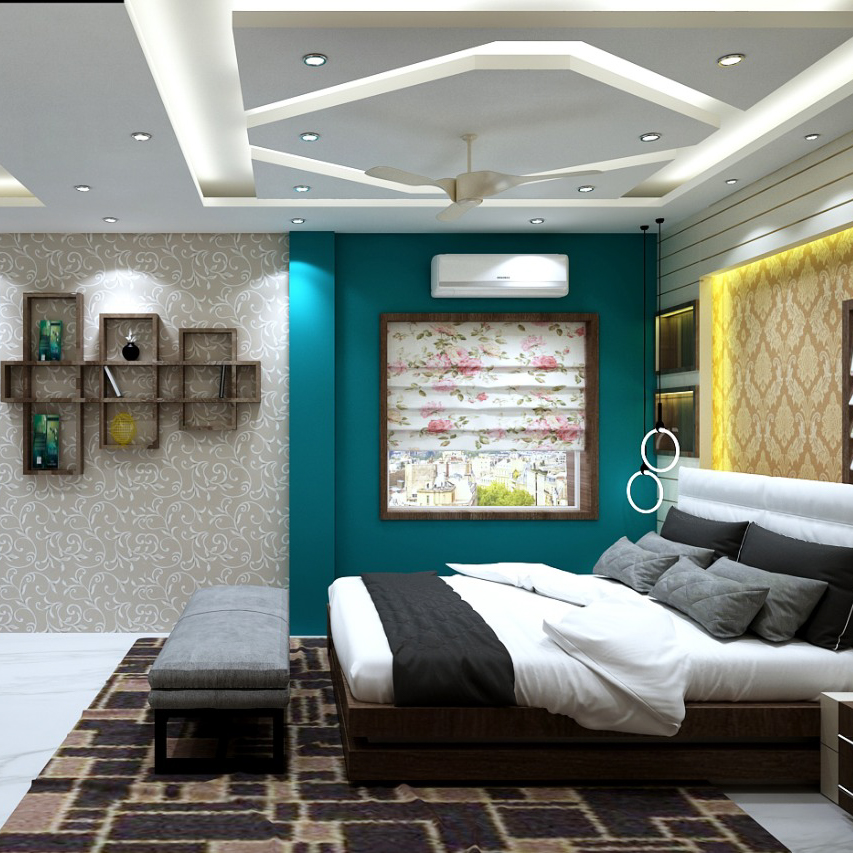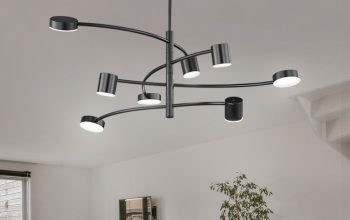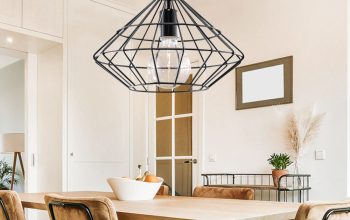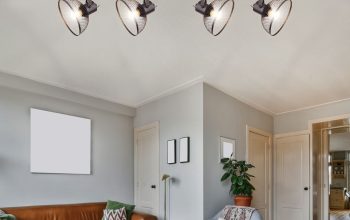In modern interior design, false ceilings or drop ceilings have become a popular choice, especially for bedrooms. False ceilings provide a flat surface that can be customized with lighting fixtures, patterns, textures, or colors. By using a false ceiling, a bedroom’s overall aesthetic can be elevated, creating a relaxing and dreamy atmosphere. In this article, let’s explore different false ceiling design ideas that can transform any bedroom into a dreamy retreat.
Types of False Ceiling Designs
There are various types of false ceiling designs that can be used in a bedroom. Some of the most popular designs include:
1. Gypsum False Ceiling
Gypsum false ceilings are made from plaster of Paris, which is mixed with water and poured on a metal framework. Gypsum ceilings are great for a bedroom because they are durable, fire-resistant, and can be easily molded.
2. Wood Paneling False Ceiling
A wood paneling false ceiling adds a touch of warmth and natural beauty to a bedroom. Wood paneling ceilings can be made from a variety of materials such as reclaimed wood, MDF, or plywood.
3. Pop False Ceiling
Pop false ceilings are made from a mixture of gypsum, cement, and water. Pop ceilings are known for their smooth surface, which can be painted or textured to add depth to a room. Pop false ceilings are also great for bedrooms because they help to absorb sound, creating a peaceful atmosphere.
Lighting Options for False Ceilings
Lighting is an important element in any bedroom, and when it comes to false ceilings, lighting options are endless. Some of the most popular lighting options for false ceilings include:
1. Cove Lighting
Cove lighting is a popular lighting option for false ceilings because it creates an even, indirect glow throughout the room. Cove lighting can be hidden behind the false ceiling or placed above the ceiling, creating a warm and inviting atmosphere.
2. Recessed Lighting
Recessed lighting is a great option for false ceilings because it provides a clean, minimalistic look. Recessed lighting can be adjusted to create a focal point in the room or provide general lighting for the entire space.
3. Pendant Lighting
Pendant lighting is a stylish lighting option for bedrooms with high ceilings. A statement pendant light can be hung from a false ceiling, adding a touch of elegance and sophistication to the room.
Design Tips for False Ceilings
When designing a false ceiling for a bedroom, there are a few things to keep in mind:
1. Color
If you want to make a bedroom feel more spacious, consider using a light-colored false ceiling. Lighter colors reflect light, making the space feel brighter and more open. Darker colors, on the other hand, absorb light and can make a space feel smaller.
2. Texture
Adding texture to a false ceiling can create interest and depth in a room. Textured ceilings can be achieved using materials such as wood, plaster, or wallpaper.
3. Proportions
When designing a false ceiling, it’s important to keep proportions in mind. A false ceiling that is too low can make a bedroom feel cramped, while a ceiling that is too high can make the room feel cavernous. The ideal height for a false ceiling is usually around 8 feet.
Incorporating a false ceiling into a bedroom’s design can transform the space into a dreamy retreat. With various design and lighting options, false ceilings provide endless possibilities for customization. By keeping color, texture, and proportions in mind, a false ceiling can add a touch of elegance and sophistication to any bedroom. Whether it’s a gypsum ceiling, wood paneling, or a pop ceiling, a false ceiling can bring any bedroom design to the next level.




